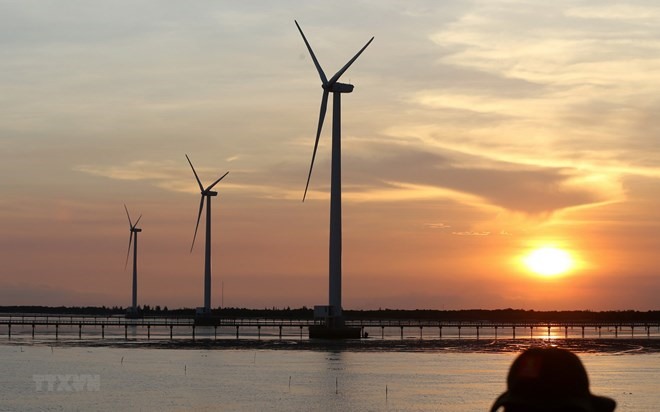 Society
Society

After 2020, Việt Nam could avoid building any new coal plants, while maintaining a safe, affordable and secure energy system.
 |
| By increasing the share of renewable energy and using power in the more sustainable way, Việt Nam can avoid building about 25 coal power plants to embrace the national energy security thus saving US$60 billion of expecting investment for the plants and $7 billion per year spending on imported coal. — VNA/VNS Photo |
HÀ NỘI — In two years time, Việt Nam could stop building new coal plants, while maintaining a safe, affordable and secure energy system.
This is a result of a draft report themed “Ensuring justice in the energy transition in Việt Nam” composed by the Việt Nam Sustainable Energy Alliance (VSEA).
The report was published on Tuesday in cooperation with Green Innovation and Development Centre (GreenID) under the framework of the International Conference: Fostering Cooperation to Ensure a Just Energy Transition hosted by GreenID and Friedrich Ebert Stiftung Vietnam (FES Vietnam) and Union of Science and Technology Associations (VUSTA).
Developing sustainable energy is a priority in many countries including Việt Nam. However, how to ensure employment for affected workers and peacefully switch from fossil fuel to renewable energy and avoid any social unrest has not attracted much attention.
Nguyễn Thị Hoàng Nguyên from Ministry of Labour, Invalids and Social Affairs, a member of the research group, stressed the significance of vocational training for workers and accelerate civic engagement into developing energy policies to ensure just transition.
Also, by gathering a variety of regional and international experts on the topic of just transition ranging from academia to trade unions and policy makers, the workshop provides a platform for an in-depth exchange on the status quo of just transition efforts in Asia and beyond.
“Our goal is to conceptualise a just transition in such a more comprehensive way to shape a more sustainable and humane version of tomorrow’s economy. So how can we unite these different approaches to build alliances for a just transition in Asia and beyond? That is one of the key issues we would like to discuss during the conference,” said Yvonne Blos, President of FES Vietnam.
The research also considers three scenarios including the State-issued Power Development Plan VII (PDP7) revised, the renewable energy scenario and the renewable energy combined with energy efficiency, both were proposed by GreenID.
Under the revised PDP7, Việt Nam’s power industry is expected to meet socio-economic development objectives with an average yearly GDP growth of 7 per cent during the period 2016-30, 1.5 per cent lower than the GDP forecast in the original PDP7. Meanwhile, the scenario of renewable energy combined with energy efficiency promises better benefits.
VSEA suggests that, by increasing the share of renewable energy and using power in the more sustainable way, Việt Nam can avoid building about 25 coal power plants to embrace the national energy security thus saving US$60 billion of expecting investment for the plants and $7 billion per year spending on imported coal.
The proposed scenario is also expected to reduce 116 million tonnes of CO2 emissions per year compared to the PDP7 revised and help the country to be accordance with Paris Agreement targets. — VNS




